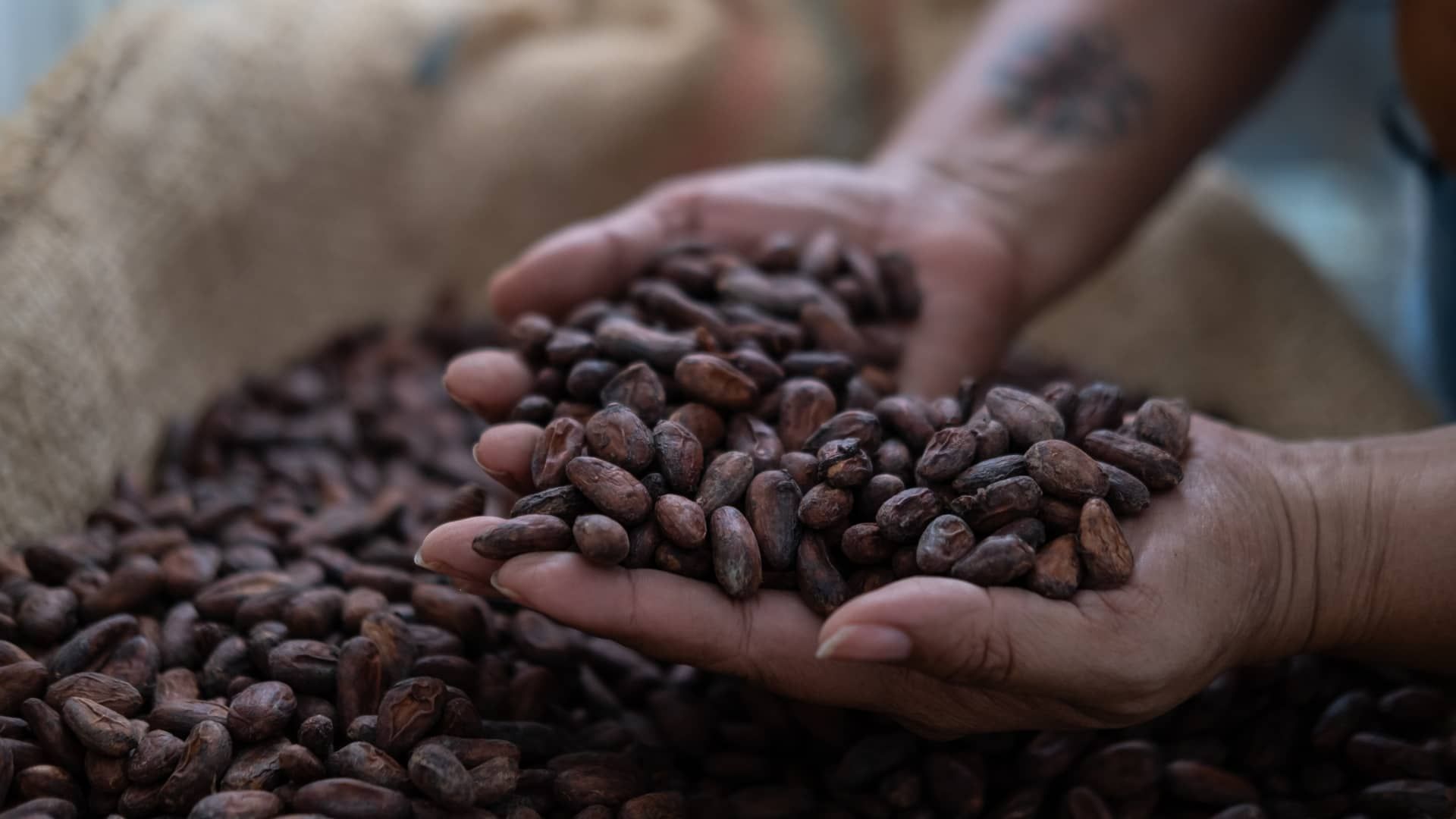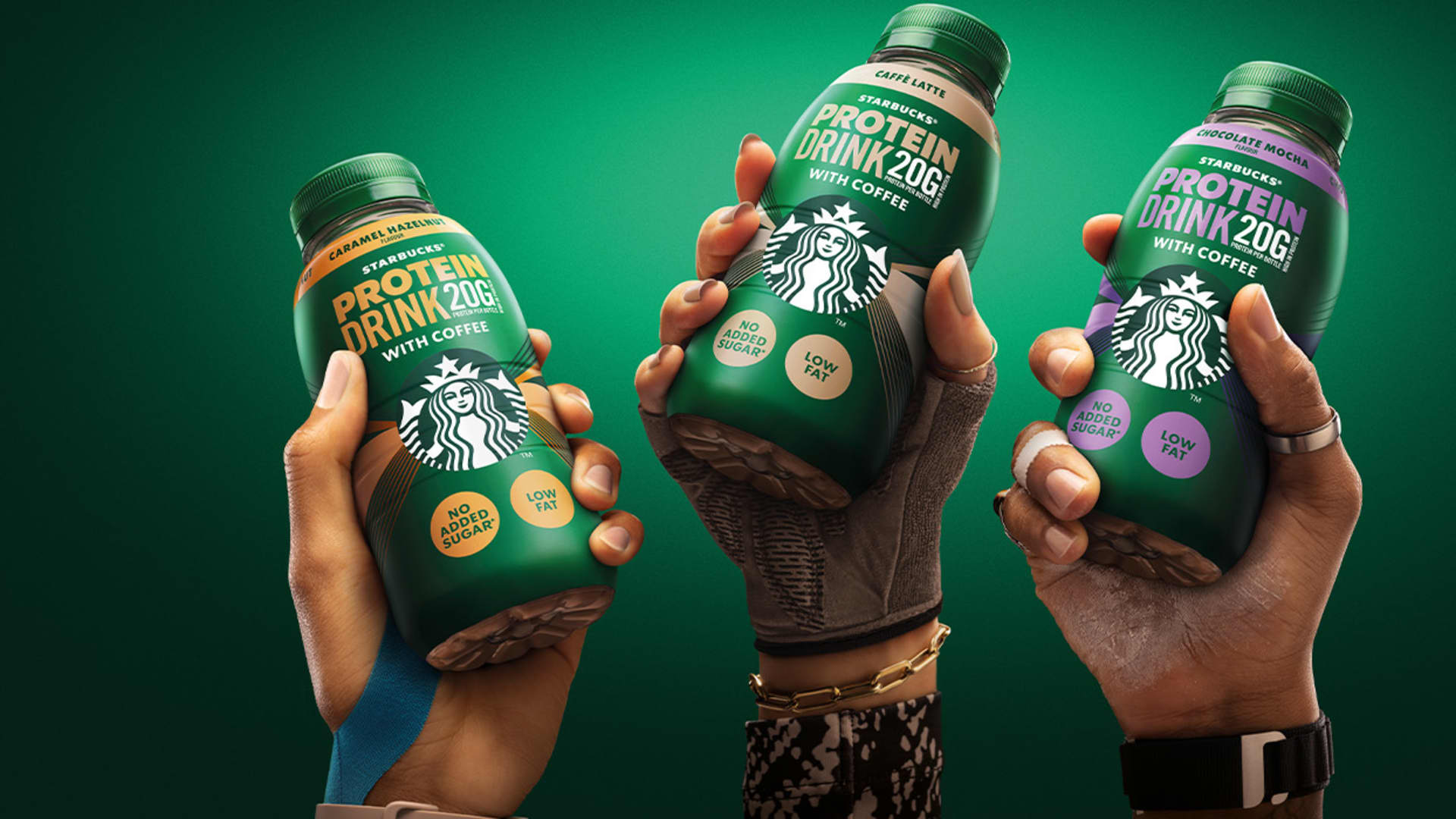Dried cocoa beans at the Somos Cacao farm and production facility in Ragonvalia, Norte de Santader department, Colombia, on Friday, March 22, 2024.
Ferley Ospina | Bloomberg | fake images
There's price pressure gripping a specific corner of global agriculture, and it's bittersweet.
Cocoa prices have more than tripled over the past year, creating a major headache for candy makers and other food companies that use the ingredient to make chocolate.
In recent years, the price of cocoa had been around $2,500 per metric ton. But reports of a weaker-than-expected harvest raised concerns about supply, causing output to rise in recent months. Cocoa hit an all-time high of more than $11,000 per metric ton in April. Since then, price growth has slowed slightly, but the harvest is still well above what food companies are accustomed to paying.
For now, many of the largest candy companies… Hersheythe maker of M&Ms, Mars, the owner of Kinder, Ferrero, and the father of Cadbury mondelez – are likely protected from higher cocoa costs, thanks to long-term contracts that lock in the prices they pay for key products to protect them from events like this. That gives them some time to address the problem. But in 2025, they will probably end up paying a lot more for their cocoa.
“This is absolutely impacting the way these companies run their businesses, simply because the impact on costs is incredibly significant,” said Steve Rosenstock, consumer products leader at Clarkston Consulting, which advises clients on how to deal with issues like the rising cost of cocoa.
Mars declined to participate in this story. Mondelez, Ferrero and Hershey did not respond to CNBC's requests for comment.
expensive cocoa
West Africa, which produces most of the world's cocoa supply, has been hit by crop diseases and lower prices paid to farmers at the point of sale, called farmgate prices, pushing them to grow more lucrative crops. like rubber instead of cocoa. This season's cocoa crop is expected to experience the largest shortfall in at least six decades, according to a Rabobank report in May.
Reuters reported on Wednesday that Ghana, the second-largest cocoa producer, is looking to delay a delivery of up to 350,000 tonnes of beans for next season, which would push prices up again.
A worker collects cocoa fruits at the Somos Cacao farm in Ragonvalia, department of Norte de Santander, Colombia, on Friday, March 22, 2024.
Ferley Ospina | Bloomberg | fake images
On recent earnings calls, Mondelez and Hershey executives said they believe market speculation is driving at least some of cocoa's rise. Prices could drop in September once more information about the new crop is available, but that doesn't mean they will return to normal.
The rising cost of raw materials comes at a difficult time for many food companies. Over the past two years, many have raised prices to address inflation that has hit a wider range of commodities. As a result, shoppers have become more selective about what they buy and more dissatisfied with the prices they see in grocery stores. Consumers' focus on value leaves candy companies with little room to maneuver when it comes to pricing to cope with the higher cost of cocoa.
And then there is inflationary contraction, a buzzword that has entered the layman's lexicon over the past two years. Companies will reduce the quantity or weight of a product as long as the price remains the same. But consumers have caught on to the trick. A YouGov poll in October found that 72% of American respondents had noticed an inflationary squeeze in food products.
Short-term alternative solutions
As a result, many companies will have to become more creative.
J&J Snacks CEO Daniel Fachner closely follows cocoa and chocolate prices. The company owns brands such as Dippin' Dots, SuperPretzel and Hola Churros and makes products for other companies, such as Subway's foot-long churro. Chocolate is a common flavor in their portfolio, which includes delights like a chocolate-filled churro.
“It won't stop us from using chocolate, but it will make us think and say, 'Now, if we make this innovation at that new price point, will it be salable?' And then when we sell it, 'Is it at a low enough cost that the customer can sell it and still make a good margin?'” Fachner told CNBC in May.
A hypothetical solution, proposed by Fachner, could be to reduce the number of chocolate chips from 12 to nine in a given product. He also said J&J is looking at possible substitutes that might work for some of its recipes.
Chocolates are displayed on a shelf at Celine's Sweets in Novato, California, on March 22, 2024.
Justin Sullivan | fake images
RBC Capital Markets analyst Nik Modi cited Hershey's new Jumbo Reese's Cup as a creative solution.
“This one has extra peanut butter in it, so it's a good way to try to bring innovation to the market at a premium price point, let the consumer feel like they're getting value, but just change the product itself to reduce reliance on chocolate. ” he said.
For food companies that don't primarily deal in chocolate, they might start avoiding the flavor, especially when it comes to new products.
“I think, more or less, people will try to stay away from chocolate right now,” Modi said.
The long tail of the cocoa crisis
While this year's rise in cocoa prices has been historic, it likely won't be the last time food companies find themselves paying more for the commodity. Analysts are already predicting another cocoa deficit next year, although it would probably be less dramatic than this season.
However, systemic issues such as government-controlled farmgate prices and climate change are likely to continue to hurt the bean crop. Additionally, the use of child labor and slavery on West African cocoa farms has led to lawsuits and scandals for candy companies.
In the long term, that means many companies will have to look for more permanent solutions. In some cases, that may mean alternatives to cocoa.
“There are examples where companies are increasing the amount of non-cocoa additives, like sugar, cheaper things like cocoa butter equivalents, shea butter, palm oil, coconut oil, that kind of thing,” Rosenstock said.
Justin Sullivan | fake images
Recipe reformulation takes about nine months on average, according to a research note published Thursday by Bank of America Securities analyst Antoine Prevot. He said he believes fast-moving consumer goods companies have been considering changing their formulas since early this year, meaning the new candy could start arriving as early as August.
There are also more extreme substitutes. Startups like Voyage Foods and Win-Win have made cocoa-free chocolate using alternatives like grape seeds and legumes.
At least one candy company isn't planning major changes to its formulas.
“We will make some cost adjustments, but we are not going to change recipes or do things that are not necessarily right for the business in the long term,” Mondelez CFO Luca Zaramella said June 4 at a Deutsche conference. Bank.
There is also the potential for diversification with other types of snacks. When Kraft spun off Mondelez more than a decade ago, it already had Triscuit, Sour Patch Kids and Wheat Thins snacks in its portfolio, as well as Milka, Oreo, Toblerone and Chips Ahoy chocolate products.
Other candy companies have followed suit and added more salty snacks to their lines to drive further growth. For example, Hershey purchased Amplify Snack Brands in 2017, adding SkinnyPop to its portfolio, and Dot's Homestyle Pretzels in 2021.
“I don't think they did it to be less dependent on cocoa; they did it to react more easily to the ups and downs of consumer trends and to be able to really diversify their portfolio,” Rosenstock said. “But the ability to lean into some of the non-chocolate categories, whether it's salty snacks, jelly beans or gummy products, I think is a good way to combat the cocoa crisis.”









